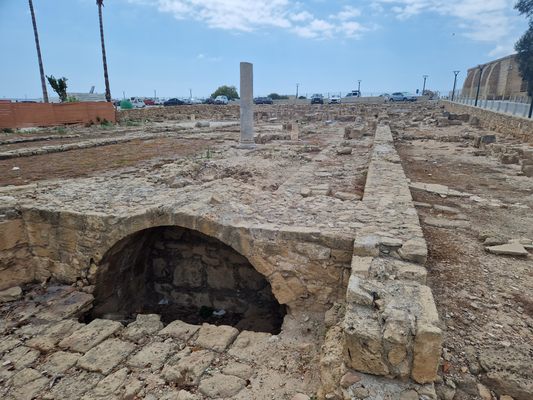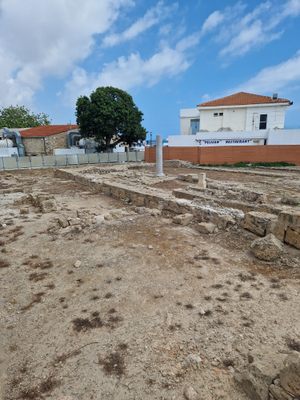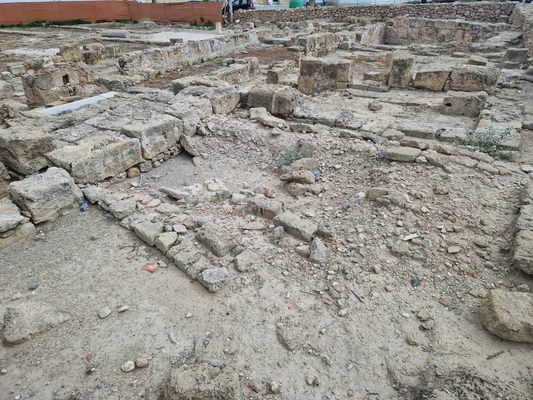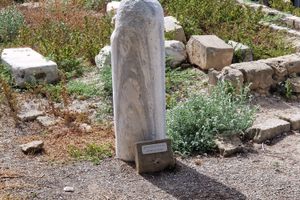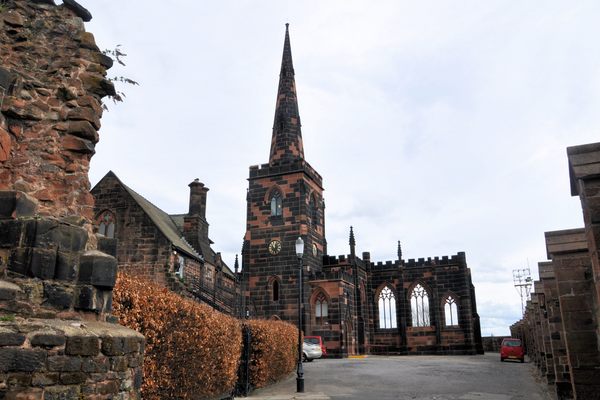About
The Basilica of Panagia Limeniotissa was built in the early fifth century, when Cyprus was part of the Byzantine Empire. Originally, the church consisted of three aisles with two rows of marble columns, an apse, and a narthex. The floors and walls of the church were decorated with geometric mosaics. Today visitors can view the columns and remains of the mosaics.
The basilica was almost destroyed during the Arab raids of 653. Invaders used the church as workshops, stables and living quarters for the army garrisoned here, some of the columns still have inscriptions in Arabic.
Then, in 688, the Arabs left Cyprus, and the church was restored as a three-aisled barrel-vaulted basilica—albeit on a smaller scale than before.
In 1159, the basilica was destroyed again, this time by an earthquake. In the following years, a smaller structure was built upon the ruins, but it too was destroyed by an earthquake in 1222.
The church was then forgotten and left to fall into ruin. For many years the exact location of the basilica was unknown, with Panagia Limeniotissa first rediscovered in 1937 and officially excavated in 1959.
Related Tags
Know Before You Go
The Basilica of Panagia Limeniotissa is outside the Archaeological Park and can be viewed for free, sitting behind harbour front restaurants.
There's free parking on the harbor front.
Published
July 16, 2024
